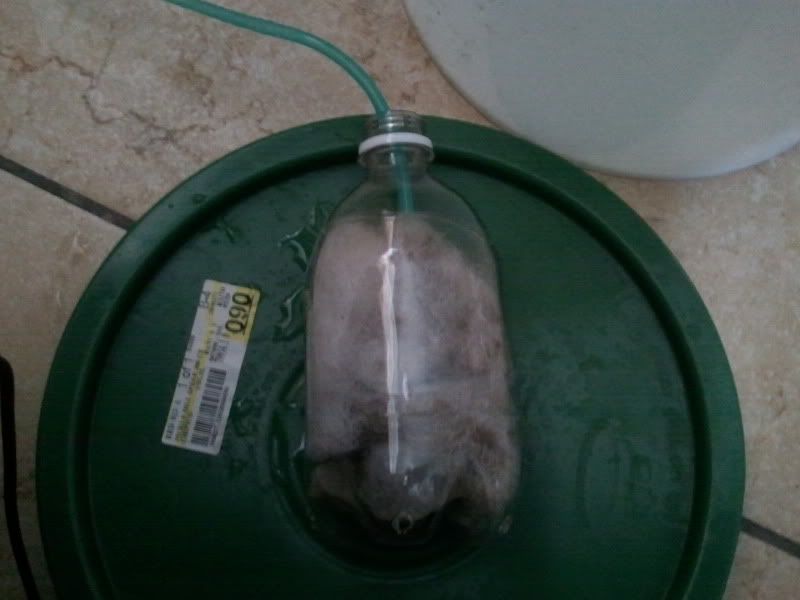dilled hole through filter media. Just like old school sponge filters. I have kept fingerlings in this setup for 2 weeks and water is perfect. They are even eating flakes.


Posted 17 March 2012 - 12:45 PM


Posted 17 March 2012 - 12:51 PM
Edited by EricaWieser, 17 March 2012 - 12:54 PM.
Posted 17 March 2012 - 11:43 PM
I'm not sure the air pump is strong enough to move sand, which is why I mentioned bioballs. I agree, they're lame. Sand is better.Not really a money saver once you invest in bioballs though.
Posted 18 March 2012 - 12:47 AM
Posted 19 March 2012 - 10:46 AM
Posted 23 January 2015 - 08:05 PM
120 low tech native planted - Blackstriped Topminnow, Central Stoneroller, Fathead minnow, Golden Shiner, Black chin shiner, Carmine Shiner, Emerald Shiner, Sand Shiner, Spotfin Shiner, Orangethroat darter, Johnny Darter, and Banded Darter.
Posted 04 May 2015 - 09:19 AM
Haven't for a while...thought I'd been booted for some reason, but turns out I should read the tech support forum...
I keep cheap sponge filters (~$5 each, bought from Amazon) live/active by keeping them in my extra plant "tank" - a covered container I keep outside. That way, I have at least three or four ready to go if I need to set up a quick bucket tank or whatever. I can stick them in very little water in a bucket to have them on hand (I have a truck though, so lots of bucket storage space with little worry about sloshing)
I do like the idea of a DIY solution if I were making a long trip and ran out of sponges. You could pick up the floss at any big box discount store, and I carry extra tubing and pumps (battery and plug in). A pocket knife could take care of the fabrication...
Edited to add: the little short/stubby 8oz water bottles (Deer Park is the brand that I have in the fridge - given out at conferences and such) are probably a good size for a small bucket, and you wouldn't have to cut it.
Posted 11 July 2016 - 04:16 AM
* Warning: discussion without any data. It would be nice to have data. I like data almost as much as pizza or cheezits.
It has always seemed to me that the problem with a sponge-filter-based mobile system is that you have to keep the sponge/s "charged up" with the good bacteria, during the dull times between collections. So you have to keep feeding them something with nitrogen content, such as ammonia, whether bio-produced or straight commercial (unscented) ammonia cleaner. And if you want the max de-nitrifying power in your mobile-to-go sponge collection, you need to have them well-fed with the ammonia foodstuff, because it takes time for the bacteria populations to grow.
Keeping this bacteria colony going takes some work. And there's no quick and easy way to eyeball your sponge-collection-in-training and determine that it's "power is strong, it's ready for a road trip." Then in the mobile environment, to keep the sponge filter(s) going, you need a continuous air supply. Which gets more and more difficult as you scale up your operation in terms of the numbers of buckets and coolers and/or days of the trip.
All in all, even after a lot of work to use the sponge filters on your collecting expedition, you may or may not get the effects of the de-nitrogen cycle that you want.
In contrast, a dose of Seachem Prime or equivalent is fast, easy, gives reliable consistent performance, is inexpensive, and is essentially foolproof. Unless you forget to dose altogether.
(Anti-prejudicial disclaimer: I love sponge filters at home. That's how I filter most of my tanks. They work great in a stable situation; they're effective, low-maintenance, and very cheap to operate.)
Edit: where ever I say "sponge [filter]", the same would be true for "[fluidized] sand [filter]", except I think those need more electrical power to keep the sand moving.
Doug Dame
Floridian now back in Florida
Posted 12 July 2016 - 06:11 PM
is prime a bacteria starter, or an ammonia detox product?
Ammonia detox product. (I've used the Seachem bacteria starter in aquariums, and I like it, but to my mind that's the long & hard way to deal with temporary containers on the way home from collecting.)
Doug Dame
Floridian now back in Florida
0 members, 1 guests, 0 anonymous users